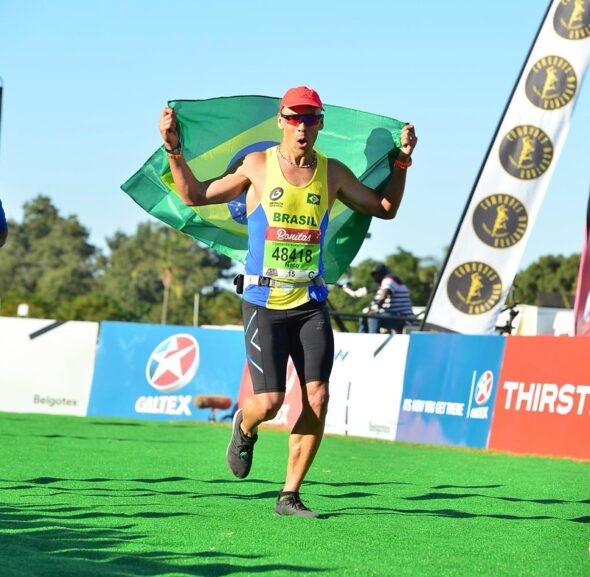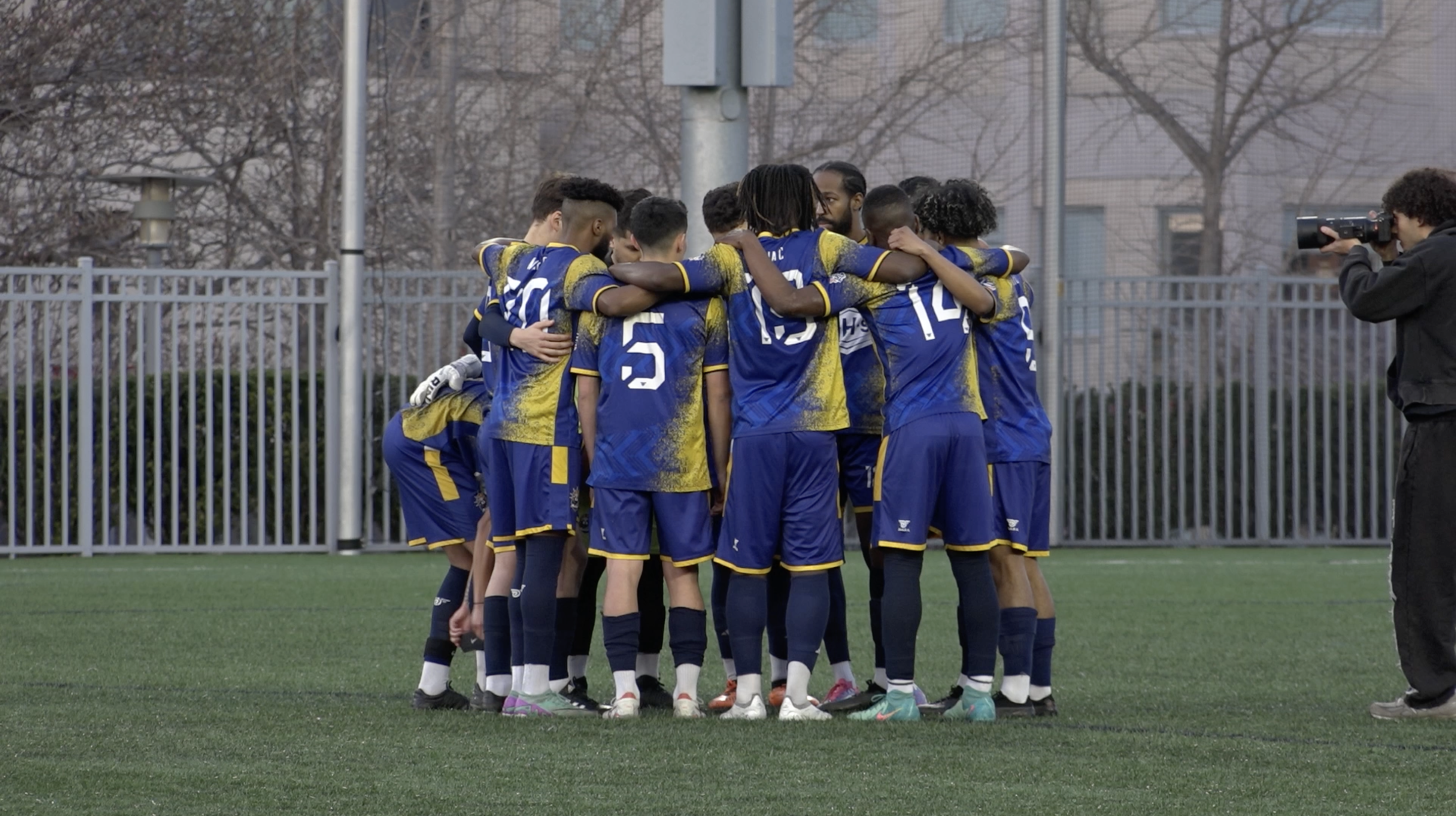Edna Halvin often thinks to herself, “What the F**k am I doing here?”, when she runs a marathon. The feeling of exhaustion wants to take over, but she tells herself to be thankful because she is there doing what she loves.
Pushing through the pain, convincing her mind that she can finish, ignoring all the self doubt, dedicating multiple hours a day, spending time away from her family, and making it one of her top priorities for months at a time, is what she and all marathon runners face when they decide to tackle the 26.2 mile run and longer.
“I was very naive when I signed up,” she said. “I knew I was going to have to be more disciplined with training, but I didn’t know how much time training for a marathon takes from your daily life,” she said.
Havlin, 45, a native of Pirapozinho, Brazil, has learned the importance of finding a balance between work, family and running. She currently lives in São Paulo where she does most of her training throughout the year.
“Even though the family is not running with you, they are all a part of the plan,” Havlin said. “What I learned other than the physical training itself…is how to balance and plan your day around your training and your family stuff, so we can all get along because it can be a mess.”
Havlin is a married mom with three daughters. Her training schedule often gets in the way of enjoying her family. She has had to say no to trips to the park, family ski trips and vacations.
Havlin began running in 2015 and has run a total of 15 marathons, including one ultramarathon. In early November, she ran the New York City Marathon for the second time. Competing against her own times is one of the reasons she keeps coming back for more, but it’s not the only one.
“I compare running a marathon to like getting pregnant…because it’s not all pretty being pregnant, but once you see the baby you forget about everything,” said Havlin, “Once you cross the finish line, you almost forget every single thing that was hard to do and then you come back for more, it’s the joy, the excitement and you look back at all the parts that were not so beautiful and still you made it there, that’s what keeps me coming back.”
Ultimately, Havlin wants to participate in more ultramarathons, which is any race longer than 26.2 miles.
Renato Amaral, 50, a marathoner from São Paulo, began running in 1997 and has run so many marathons that he has lost track of the exact number.
“I can tell you that including marathons and ultras, I have certainly done more than 50,” he said.

Renato Amaral at the Comrades Marathon with his green number 48418. Courtesy of Renato Amaral
Amaral has run 19 ultramarathons, including the Comrades Marathon 16 times. The Comrades is the largest and oldest ultramarathon in the world, located in the KwaZulu-Natal province of South Africa. The Comrades is about 55 miles long and has had fields of up to 23,000 runners at a time.
Amaral, who ran it for the first time in 2001, is an ambassador for the race, promoting its rich history and what it represents, primarily in Brazil. His goal is to run it 20 times,
In 2014 and 2015, Amaral also took part in the Unogwaja Challenge, which requires cycling for hundreds of miles the day before the Comrades Marathon.
“We cycled 1700 kilometres (roughly 1000 miles) in 10 days and the following day we ran the Comrades,” said Amaral of the charity ride, “This 11 day challenge is the toughest challenge I’ve ever participated in.”
The challenge started in honor of Phil Masterton-Smith, who in 1933 cycled from Cape Town to Pietermaritzburg because he didn’t have train fare to get to the Comrades. He then ran the marathon the next day.
Amaral said the mental aspect is extremely important when running. He said that it is vital to be able to withstand the pain during training and while racing.
“The mental strength that the person will develop and achieve is something incomparable,” said Amaral. “When a person finishes a marathon, they realize that there are many things that people think that are not possible, but you should believe that if you put your energy and focus on it, you can do it.”
Dr. Justin Ross, who is a clinical psychologist, marathoner, triathlete, and cofounder of Mind Body Health, is an advocate of developing psychological skills that help runners achieve their goals.
“The starting point is endurance sports is determining the importance and meaning behind your goals,” Ross said on the Strength Running Podcast, “You can’t just think you can create mental toughness at mile 20 of a marathon if you haven’t figured out what that means for you throughout your training.”
Amaral said that he began running in 1997 because his goal was to finish the Ironman. The Ironman is a Triathlon event consisting of a 2.4 mile swim, a 112 mile bicycle ride and a marathon 26.22 mile run, raced in that order. He accomplished it in 2005, but when talking about his proudest achievement he had something different in mind.
“I always say that the most proud achievement in my life is the next one,” said Amaral, “So I am always aiming to be better in my next race.”
At the end of the day, all marathoners have different aspirations in mind. While some goals seem more attainable than others, many of them set goals that will take multiple tries to accomplish.
Zilma Rodrigues, 48, of Curitiba, Brazil, has dedicated a large part of her life to competing in these events, but her goal is to finish the Spartathlon. The Spartathlon is a 153 mile race held in Greece since 1983, between Athens and Sparta.
Rodrigues loves the history of the marathons, and she cites it as one of her main reasons for competing.
“The ultramarathon is one of the oldest sports and to be able to follow the same path as Pheidippides is a great inspiration,” said Rodrigues, “Running a historic route is very exciting.”
The legend of Pheidippides says that he ran from Marathon, Greece to Athens, Greece to deliver the news about the victory of the battle of Marathon. His story is the inspiration behind the Marathon race.
The Spartathlon is known for having rainy weather with rough and muddy paths, not to mention its most well known obstacle for most of the runners, a 1,200 meter ascent and descent of Mount Parthenio in the middle of the night.
Despite competing in the event two different times, Rodrigues has not been able to reach the finish line. She said the climb of Mount Parthenio is one of the most difficult challenges for her. Between 1982 and 2019, only 3504 racers finished the Spartathlon. She said it was a disappointing feeling but something that she is grateful for.
“When you work hard for a dream and even leave other things aside, at the moment it’s a sadness, a feeling of impotence, feeling that you are not good enough,” said Rodrigues, “There are few in the ultramarathon world that are lucky to be in Athens, so this frustration gives way to the hope of being able to start over and try again and believe that we are capable of anything if we have dedication and love in what we want to accomplish.”
Rodrigues’ has 31 marathons and 44 ultramarathons on her resume and has accomplished so much, but she is not satisfied. She is confident that she can be one of the few people to finish the race.
“I’m still trying to learn to run long races, trying to learn to bear the pain of workouts and one day finally kiss or kick Leonidas’ feet in Sparta,” she said.


